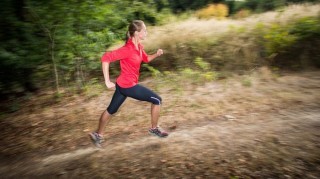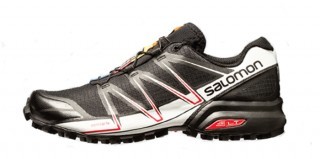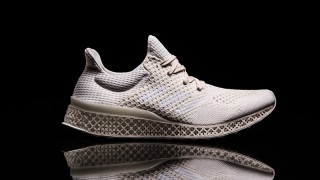Ryan Hall's Blog, page 341
October 8, 2015
Out There: The Beginning of the End

Photo: Shutterstock.com
“Wait, wait,” I gestured to my boss to pause his story for a moment. “You mean to tell me you suffer for 10 hours…”
“Yes.”
“…like, major suffering…”
“Uh-huh.” Carlos nodded.
“And you do this voluntarily. For fun?”
“Yup.”
“That doesn’t sound like fun. That sounds like pain.”
His eyes widened. “The pain is the best part! It lets you know you’re alive!”
The statement was so ludicrous, I couldn’t believe he was serious. I could only shake my head and laugh.
“With all due respect, sir, I think you’re crazy.”
It was the first time I had heard about the Ironman triathlon. My boss, Carlos, had finished the 140.6-mile race in Arizona the day before, and came to work the next day, sunburnt and limping. Though I thought the race was the dumbest thing I had ever heard of, something about his story stuck with me.
Little did I know, one day I would finally get it. A few years later, during my first Ironman triathlon, I experienced a new kind of pain—and I had never felt more alive.
Over the years, Carlos has become my closest friend and favorite training partner. Our friendship has been built on the shared pursuit of pain—riding bikes up mountains, “easy” swims that always seem to turn into competitions, pushing each other out of the way as we sprint back to the trailhead (“Last one to the car has to pay for coffee!”).
When cancer crept into Carlos’s body four years ago, “pain” took on a new meaning. Before, pain was the result of a search for what he was made of; after his diagnosis, the body preemptively answered that question, and the answer always seemed to be “tumors.” Chemotherapy caused him to curl onto the floor in a fetal position for days on end; surgeries left him covered in scars; experimental treatments tested his physical and mental limits. Still, Carlos was willing, even grateful, to accept the pain.
“The pain lets me know I’m alive.” He said with determination. “When the pain stops, that means I’ve stopped.”
His cancer has spread dramatically in the last year—to the liver, to the lungs, to the brain—and his doctors have exhausted all options for treating him. A few months ago, Carlos was told to make arrangements with a hospice facility.
“We can’t try to cure you anymore,” the doctors said, “but we can manage your pain and keep you comfortable until the end.”
“I don’t want to be comfortable,” Carlos replied, pushing away the hospice brochures. “I’m not ready for that.”
Last week, I got a text message from his daughter, saying Carlos was being transferred to hospice care. The swelling in his brain had simply become too much to bear. Ready or not, Carlos had reached the beginning of the end.
When I got to his bedside the next morning, he was smiling serenely.
“Good drugs?” I asked.
“Ohhhh, yeah.” He purred.
I sat next to his bed, holding his hand as he moved in and out of sleep. Every few minutes, he’d stir and start a brief, but lucid conversation about riding bikes on South Mountain or where to get a good post-run burrito. Sometimes, he’d fall asleep again, only to wake up confused and muttering.
“Where am I?”
“You’re at hospice, sir.”
“Why am I here?”
“Your nurse thought you’d be more comfortable here.”
“Oh.” He closed his eyes again, only to open one a few seconds later and whisper: “Am I comfortable?”
“Yes.” I smiled. “Very.”
Carlos squeezed my hand as he drifted off to sleep once again.
“Good.”
****
About The Author:
Susan Lacke does 5Ks, Ironman Triathlons and everything in between to justify her love for cupcakes (yes, she eats that many). Susan lives and trains in Salt Lake City, Utah with three animals: A labrador, a cattle dog, and a freakishly tall triathlete husband. She claims to be of sound mind, though this has yet to be substantiated by a medical expert. Follow her on Twitter: @SusanLacke.
The post Out There: The Beginning of the End appeared first on Competitor.com.
Ultrarunners Plan to Run From Chicago Marathon to New York City Marathon

Barefoot Alex Ramsey (left) and Patrick Sweeney. Photo courtesy of Patrick Sweeney.
Long-distance runs across the United States are nothing new—heck, Patrick Sweeney and “Barefoot” Alex Ramsey did one earlier this year; Ramsey going from Huntington Beach, Calif., to Washington D.C., and Sweeney extending the journey to Boston.
But this one is a little different. Sweeney and Ramsey plan to run the Chicago Marathon on Sunday, then start an 850-mile running journey to New York City, with plans to get there in time to run the New York City Marathon on Nov. 1. That’s 21 days of running 40-plus miles a day, with two World Marathon Majors races on each end. And with the New York City Marathon start time set in stone, Ramsey and Sweeney have a hard deadline they have to meet.
“We’re also jumping right into high mileage,” Sweeney said. “I run every day, but I don’t run that much. But the body is great at adapting.”
Sweeney and Ramsey are doing the run as a U.S. leg of the Champions Walk for Peace, which was set up to bring awareness to ethnic violence in Kenya’s North Rift Valley.
The two are certainly cut out for the job. Sweeney is a 2:37 marathoner who says he runs about 20 ultramarathons a year on average. He also has a Guinness World Record for a 24-hour run on soft sand, covering 94 miles.
Ramsey, meanwhile, has qualified for the Boston Marathon running barefoot, and has run the Leadville Trail 100 among other high-profile ultras.
Both runners are ambassadors for Luna Sandals, a minimalist footwear brand co-founded by Barefoot Ted of Born to Run fame.
The two are good friends, which will make the journey easier for both.
“Alex is one of the most easygoing, mellow, positive people I know,” Sweeney said. “I love being around positive people.”
Sweeney and Ramsey will make a relatively straight shot from Chicago to New York, passing through Indiana, Ohio, Pennsylvania and New Jersey.
The post Ultrarunners Plan to Run From Chicago Marathon to New York City Marathon appeared first on Competitor.com.
The Physiological Differences Between Male and Female Runners

Photo: Shutterstock.com
Running like a girl should mean training like one. Though seemingly an obvious statement, science is just now appreciating the differences between the sexes and the importance of tailoring nutrition, training and recovery to the needs of female athletes. And determining the special considerations of female athletes is becoming increasingly important since, according to Running USA, female runners now form the majority of participants in U.S. road races.
Before we discuss the differences, let’s focus on an important similarity. For both men and women, the foundation of endurance performance remains the same—aerobic capacity or VO2max, running economy and lactate threshold. Improvements in any or all of these three components are responsible for reaching new PRs or feeling stronger on group runs with speedy friends.
RELATED: 3 Simple Ways to Add Speed and Endurance
But for all the strides that women have made over the last several decades—and all their potential to continue to run faster and longer—the reality is that there are physiological differences between male and female runners. In order to improve performance, it’s important to identify them in order to determine an optimal training strategy for female runners.
“Here’s the basic landscape: If a woman follows a general training program designed for a dude (or rather a program not designed to take a woman’s physiology into account), she will most likely end up overtrained, slow, and have extra body fat,” says Dr. Stacy Sims, physiologist and co-founder of Osmo Nutrition.
Recent research may explain some of the biological reasons behind those differences.
According to researchers from the University of Texas, Southwestern, a variation in the way female endurance athletes adapt to exercise may significantly influence running performance. In the 2015 study, presented in the Journal of Applied Physiology, researchers investigated whether males and females would respond similarly to an equivalent training stimulus over a 1-year period. The goal of the training was to prepare the 12 subjects (five men, seven women) of the study for either a marathon, triathlon or long distance cycling event. By the end of the training year, individuals were training up to 9 hours per week.
The study found that the training response in females was markedly attenuated, that after an initial improvement in heart size and aerobic fitness, gains plateaued for the remainder of the study. “The development of ventricular hypertrophy and increase in VO2max in females is markedly blunted compared with males,” the researchers state. What it means is that the size of the heart muscle, which is one of the cardiovascular adaptations that allows more blood and oxygen to be pumped to working muscles, didn’t grow as much in the female athletes. That in turn limited gains in aerobic capacity.
In the study’s male subjects, the training response was much greater. Both heart size and aerobic fitness steadily increased in response to an increase in training intensity and duration.
Other studies investigating changes in heart structure after exercise training have established similar levels of adaptation. A 2014 article in the Scandinavian Cardiovascular Journal found that the heart atria of female runners did not change in size after training as markedly as that of male runners. Though that does limit cardiac output and aerobic capacity in female athletes, the study’s authors emphasize that this may not be all negative, as it also lowers the chance of developing the cardiac arrhythmias associated with exercise induced changes in heart size.
But female runners also have performance adaptations that are superior to that of male runners. Studies of distance runners suggest that men are more likely than women to slow their pace in a marathon. Recent research, presented in the May 2015 edition of Medicine and Science in Sports and Exercise, used the results of 2,929 runners from 14 marathons in 2011. Male runners slowed an average 16 percent from the first half of a marathon to the second while females only dropped their pace by 12 percent.
RELATED: Study: Women are Better at Marathon Pacing Than Men
A variety of factors might contribute to this sex difference in marathon pacing. For example, men are more susceptible to muscle glycogen depletion, which can contribute to the “hitting the wall” sensation. Men may also be more vulnerable to slowing because, during endurance exercise, women generally use proportionately more fat and less carbohydrate at a given intensity of exercise.
Another possibility is that men might be more susceptible to over-heating, which is believed to be another frequent contributor to marathon slowing.
So what does this mean for female runners looking to continue to improve performance? Far from indicating that female runners can’t get faster, the research merely proves the value of tailoring training to their specific needs. After all, aerobic capacity is only one of the three determinants of performance; improvements can come from maximizing adaptation in running economy and lactate threshold.
Dr. Erin Howden, the lead researcher from the University of Texas, Southwestern study, advises female runners, “While your absolute capacity may not increase with greater increases in training, your ability to hold a higher percentage of your maximum should improve with training.”
To boost performance, changing the other two determinants of endurance performance may be the key for female runners. For example running economy, or the amount of energy it takes to run a consistent pace, is improved in male and female runners after resistance training. Like the fuel economy of your car, improved running economy helps you run faster for longer.
Lactate threshold training, which trains your body to be able to neutralize lactate, is another way to improve the ability to run a higher percentage of maximal pace. Interval training at lactate-threshold pace—about 10 to 15 seconds per mile slower than 5K race pace—will spur improvements in lactate threshold.
Andrew Kastor, head coach of the ASICS Mammoth Track Club, believes that training the individual is the key to success. “I feel it’s important to treat and prescribe workouts to each athlete as an individual and not by gender. On our team, the women typically run 10 to 15 percent lower volume than some of our men—not because they are women, it’s just what their training warrants.”
Howden also believes that adaptation relies on not just the type of training you do, but also what you don’t do, saying, “We know that recovery is also important to allow adaptation to occur, so ensuring hard sessions are followed by active recovery sessions or cross-training is important.”
Also, as the researchers found that female athletes tended to not take in adequate energy to sustain muscle growth, nutrition may be an important part of continued improvements in performance. Muscle growth and adaptation needs to be fueled.
“Research on the differences in physiology don’t suggest that female runners can’t improve performance, it merely emphasizes that female athletes can’t train like males,” says Sims.
The post The Physiological Differences Between Male and Female Runners appeared first on Competitor.com.
October 7, 2015
Brooklyn Welcomes the Rock ‘n’ Roll Half Marathon

Photo: Ryan Bethke
New York City has always been a place for firsts and this weekend the Big Apple’s most populous borough will be host to yet another: the inaugural Rock ‘n’ Roll Brooklyn Half Marathon.
An incredible atmosphere, filled with live bands amid the bright and beautiful fall colors, is in store for 17,500 runners who will toe the start line early Saturday morning in front of the stunning Soldier’s and Sailor’s Arch at the Grand Army Plaza in Brooklyn’s Prospect Park. Ninety-two-year-old Harriette Thompson, the oldest woman in history to finish a marathon, will be honored at the start by the Leukemia & Lymphoma Society’s Team In Training program.
Elisa Hoffman, the event manager for Saturday’s race, has been working for years to coordinate the race and couldn’t be more excited about seeing her plan turn into reality.
“I love New York,” she says. “Not only is this race going to be the largest inaugural half-marathon in the U.S., it’s also held in one of the most iconic running destinations! Brooklyn is one of the most up and coming boroughs of New York and participants get to run on closed streets, which cannot be done just any day of the year.”
An avid runner and triathlete, Hoffman says that Brooklyn happens to be her favorite New York City borough and that it was the perfect place for the half marathon.
“Rock ‘n’ Roll does have a history in Brooklyn as we produced a 10K from 2011-2013 in Prospect Park,” she added. “It was a natural progression to bring the half marathon back there. Being the inaugural year, we started from scratch for pretty much everything. We’ve been lucky enough to work with great people from the city and parks that have helped make this event possible.”
The man who pulled off the course magic in America’s busiest city is New York native Ted Mettelus, the Course Operations Director for the Rock ‘n’ Roll Marathon Series.
“I take great pride in producing an event in the city I call home,” he says. “It’s been an honor working closely with many of the agencies that help bring iconic events to life.”
Getting roads closed in New York City is no small feat, and Mettelus has been working hard for months to give the participants the very best Brooklyn running experience.
“It took literally dozens of versions until we got to the route we are running on Saturday,” he says.
After the start at the Grand Army Plaza, runners will head out and back on Eastern Parkway and Ocean Avenue before finishing at the Nethermead in the center of Prospect Park amid the vivid orange and yellow colors that make this green space one of the most beautiful parts of New York City in the fall.
And true to the Rock ‘n’ Roll experience, runners will be encouraged and serenaded along the way with live bands and pom-pom wielding spectators in cheer zones. Nate Ruess of the Grammy-award-winning band, FUN, will perform for all the half-marathoners and their families at the Toyota Rock ‘n’ Roll Concert Series powered by iHeartRadio following the race.
Runners from all 50 states and 32 countries will be taking part in Saturday’s “13.1-mile block party.” Hoffman uses the word “epic” to describe what’s in store for them there.
“It doesn’t matter if you run a 6-minute or a 12-minute mile,” she says. “Every single person will have a blast running this event.”
The post Brooklyn Welcomes the Rock ‘n’ Roll Half Marathon appeared first on Competitor.com.
Miki Suwa Gorman, Legendary Women’s Marathoner, Dies at 80
Michiko or “Miki” Suwa Gorman—a two-time Boston and New York City Marathon winner —died at the age of 80 on Sept. 19 in Bellingham, Wash., after a five-year battle with cancer. Her daughter Danielle Mika Nagel announced Gorman’s death this week via blog.
Before Joan Benoit Samuelson and Grete Waitz gained fame and became icons in women’s marathon running, Gorman, a Japanese-born American, was a pioneer for American women marathoners throughout the 1970s. She was the only woman in history to have won both the Boston and New York City marathons twice and one out of two female runners to win Boston and New York City in the same year.
RELATED: The 35 Greatest American Female Marathoners of All Time
“2:39 was a significant number in our home. It was my mom’ s best time when she won the New York City Marathon,” wrote Nagel in her blog post recounting the days leading up to her mother’s death.
That was 1976, Gorman’s first New York City Marathon win and PR of 2:39:11. At the time it was the second fastest women’s marathon time following fellow marathoner and friend Jacqueline Hansen’s world-record of 2:38:19 set in 1975 at the Oregon Track Club Marathon in Eugene. She won the New York City Marathon again in 1977, to go along with Boston Marathon wins in 1974 and 1977.
Originally, Gorman started running to add weight to her small 5-foot, 87-pound frame at the age of 34, about six years after she had moved to the U.S. Four years later in 1973, she set an unofficial world best marathon time of 2:46:36 at the Western Hemisphere Marathon (now the Culver City Marathon).
During a time when women’s distance running events were largely inaccessible and rarely recognized—it wasn’t until the 1984 Olympics in Los Angeles that the women’s marathon event would be introduced, highlighted by Samuelson’s historic win—Gorman’s accomplishments helped carve out a space for other competitive female runners to confidently break down the social barriers represented in women’s sports.
Due to injuries, Gorman quit marathons in 1978 and moved to Vancouver, then Carlsbad, Calif., with her daughter who is now a prominent international yoga instructor.
Since then she’s been inducted into the USATF Hall of Fame (1996), the Road Runners Club of America Hall of Fame (2001), the National Distance Running Hall of Fame (2010), and the New York Road Runners Hall of Fame (2012). In 2009, Gorman was honored with “Runner of the 1970s” title by NYRR.
The post Miki Suwa Gorman, Legendary Women’s Marathoner, Dies at 80 appeared first on Competitor.com.
Workout of the Week: The 5 x 5 Fartlek

The 5 x 5 helps you build strength and speed, as well as the confidence to maintain a hard effort in the latter stages of a race.
Fartlek—Swedish for speed play—can be as structured or as freeform as you wish to make it and can be done virtually anywhere: on the roads or off, flat ground or hilly terrain. The beauty of the workout is in its adaptability to a number of different environments. The duration and intensity of your faster pickups can vary or stay consistent throughout the workout, recovery can be set beforehand or adjusted on the fly if necessary and achieving a desired effort level always takes precedence over hitting a specific pace.
As the fall racing season picks up steam over the next 4-6 weeks, cross-country runners, ultra-distance racers, road marathoners and anyone in between can benefit from including some fartlek workouts in their training schedules.
One of my favorite all-purpose fartlek sessions is what my college coach coined a “meat and potatoes” workout—meaning it’s basic, but effective—called the 5 x 5. It consists of five 5-minute pickups at a hard effort with 2 minutes and 30 seconds of easy jogging for recovery in between.
Why should I do this workout?
Plain and simple: because it’s tough! When you strip it down, the 5 x 5 Fartlek is an effective workout that helps you build strength and speed, as well as the confidence to maintain a hard effort in the latter stages of a race. For all but the fastest runners, 5 minutes is less than a mile of hard running. You’ve got this!
How hard is hard?
That’s ultimately up to you, but 5K-10K race effort—for this workout I recommend ditching the GPS and opting for a basic stopwatch so as not to get concerned with hitting exact splits—is a good target to aim for on the 5-minute pickups. Don’t worry too much about pace in this workout—the goal is to get a feel for race effort while paying attention to how you’re feeling as the workout progresses, terrain changes, etc. The last two pickups should be the most challenging and require all your focus to maintain the a hard effort from start to finish.
Why halftime recovery?
Halftime recovery, or a 2:1 work-to-rest ratio, is long enough to allow you to recover some between pickups, but short enough that it forces you to carry an increasing amount of fatigue into the next pickup, meaning the workout gets more challenging as it goes on.
How do I warm up?
Keep it simple: Jog for 15-20 minutes and then do 6-8 strides before beginning your 5-minute pickups. Cool down with 15-20 minutes of easy jogging.
Where should I do this workout?
Cross-country runners and ultra-distance athletes should do this workout on grass, dirt or trails to mimic the environments where their races will be held, while marathoners and other road racers should stick primarily to the asphalt. Of course, there’s no harm in off-road racers occasionally hitting the roads for this workout or road racers taking their fartlek to the trails from time to time, but in general it’s good practice to try and replicate the terrain you’ll compete on, especially as you get closer to your target races for the season.
The post Workout of the Week: The 5 x 5 Fartlek appeared first on Competitor.com.
Shoe Of The Week: Salomon Speedcross Pro

The Speedcross Pro is sure-footed and agile on the most rugged terrain. Photo: Scott Draper
Fit-feel-ride: This toothy trail shoe (with its 6mm, hard-rubber lugs made from Salomon’s revamped Contragrip outsole rubber materials) was built to grab mud, wet surfaces and other muck found on fall trails. We found the traction did the job, and liked the secure, snug wrapping of the upper—no doubt aided by Salomon’s one-pull Quicklaces and slightly stretchy fabric on the upper. Lateral stability comes from TPU-welded overlays, allowing this shoe to feel stable and secure on rocky, technical trails. Testers craved a touch more room in the toe box on long runs, but noted the snug fit helped this shoe feel agile. The cushioning rides a bit hard, and feels almost orthotic-like (firm, secure and corrective) around the arch. Plus, the durable upper is water-resistant and the mesh across the tongue helps keep out debris, making it an ideal fall-winter trail running shoe. Perhaps the only drawback is the notion that it felt excessive—and a little too stiff—on flat, smooth terrain. If you liked previous versions of the Speedcross line and are looking for something slightly more aggressive, you’ll love this shoe.
This shoe is for you if … you have a narrow foot and seek an agile mountain climber.
Price: $150
Weights: 11.5 oz. (men’s); 9.7 oz. (women’s)
Heel-Toe Offset: 10mm; 20mm (heel), 10mm (forefoot)
Info: Salomon.com
RELATED: Shoe Of The Week—The North Face Ultra MT
The post Shoe Of The Week: Salomon Speedcross Pro appeared first on Competitor.com.
Watch: Live Stream of the 2015 Chicago Marathon

Once again, NBC Chicago will be televising the Chicago Marathon, and we’ve got the live stream right here.
Coverage of the World Marathon Majors event starts at 7 a.m. on Sunday, Oct. 11 from downtown Chicago. The NBC Chicago video feed is below:
The post Watch: Live Stream of the 2015 Chicago Marathon appeared first on Competitor.com.
Adidas Uses 3D Printing to Develop Customizable Midsoles

The idea of creating running shoes customized to a specific runners needs has been talked about for years, but a new advancement from adidas is starting to make it a reality. Adidas has developed a unique 3D-printed running shoe midsole concept that can be tailored to the cushioning needs of an individual’s foot. The 3D concept is part of the “Futurecraft Series,” a next-generation initiative that places open source collaboration and craftsmanship at the heart of design to drive innovation across all elements of production. (Watch this video for more details.)
In its new 3D concept, adidas says it has created a unique combination of material and process. The company says this production breakthrough will take the running shoe standard to the next level, offering unprecedented individualized support and cushioning for every foot, to enable athletes to perform at their best.
How will this come to life for runners? Imagine walking into a running store, then running briefly on a treadmill and to get individualized specs for a 3D-printed running shoe. Creating a flexible, fully breathable carbon copy of the athlete’s own footprint, matching exact contours and pressure points, it will set the athlete up for the best running experience. Linked with existing data sourcing and footscan technologies, it opens unique opportunities for immediate in-store fittings.
“Futurecraft 3D is a prototype and a statement of intent. We have used a one-of-its-kind combination of process and material in an entirely new way. Our 3D-printed midsole not only allows us to make a great running shoe, but also to use performance data to drive truly bespoke experiences, meeting the needs of any athlete,” said Eric Liedtke, Executive Board Member of adidas AG, responsible for Global Brands.
The Futurecraft 3D story is the first chapter of the adidas Futurecraft series, which demonstrates the brand’s commitment to innovating throughout all areas of production.
“Futurecraft is our sandbox. It is how we challenge ourselves every day to explore the boundaries of our craft. Driving material and process innovation, bringing the familiar into the future. Marrying the qualities of hand crafting and prototyping with the limitless potential of new manufacturing technologies. Futurecraft is stripped back – fast, raw and real – it is our approach to design” said Paul Gaudio, Creative Director, adidas.
True to the Futurecraft vision of creative collaboration, Futurecraft 3D is possible through an open source partnership with Materialise, a pioneer and leading specialist in 3D printing. The Futurecraft initiative will announce more ground breaking design innovations in the coming six months and further support adidas’ ambition to be the best sports brand in the world.
The post Adidas Uses 3D Printing to Develop Customizable Midsoles appeared first on Competitor.com.
Ethan Hawke to Run the New York City Marathon

Photo: Jaguar PS/Shutterstock.com
Actor Ethan Hawke, who’s starred in films such as Training Day and Boyhood, will be running the New York City Marathon this year.
Hawke will run alongside his wife, Ryan, and raise money for The Doe Fund, a nonprofit which aims to develop programs that meet the needs of a diverse population working to break the cycles of homelessness, addiction, and criminal recidivism.
“Ryan and I are both feeling daunted and terrified about taking on the TCS New York City Marathon,” Ethan said. “But fortune favors the bold, right? We are of course excited, too! We hope it’s going to be a great day for all the runners, and know that running the race on behalf of The Doe Fund will raise awareness to help many deserving people achieve their own personal success and stability.”
Those who wish to donate to The Doe Fund and support Ethan and Ryan on their journey, can visit their fundraising page.
The New York City Marathon is on Nov. 1.
RELATED: 36 Celebrities—And Other Notable People—Who Run
The post Ethan Hawke to Run the New York City Marathon appeared first on Competitor.com.
Ryan Hall's Blog
- Ryan Hall's profile
- 21 followers



